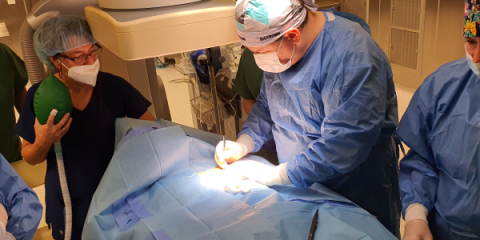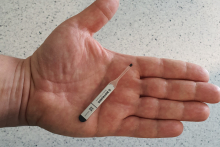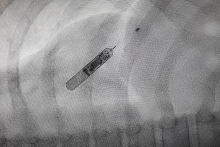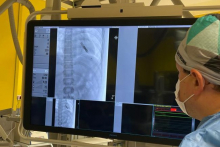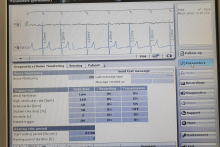The BioMonitor IIIm has the largest memory currently available of 96 minutes to store intracardiac recordings. Extended ECG recordings (IEGM) allow for more accurate analysis of detected abnormalities and therefore allow to make appropriate therapeutic decisions.
With this arrhythmia recorder, it will be possible to remotely monitor the boy using the HomeMonitoring system with daily automatic data transmission. This feature provides the ability to transmit up to 6 IEGM (ECG) recordings per day. It is worth mentioning that the BioMonitor IIIm is equipped with a battery life of more than 5 years, which allows for long-term patient care, moreover, additional features such as HomeMonitoring do not affect the life of the device.
The device allows to record a patient's heart rhythm and detect subclinical atrial arrhythmias that are not perceptible to the patient, which, if not recognized in time, can lead to numerous complications, including worsening heart failure, congestion, stroke or even death.
From a clinical standpoint, the new RhythmCheck algorithm is highly relevant, improving the detection of atrial arrhythmias while reducing false positives by 72%. The intracardiac signal recorded by the device is nearly noiseless, and the perfectly visible P waves and QRS complexes, i.e. signals from the atria and ventricles, allow for precise identification of the recorded events.
This recorder can also be used to monitor patients after ablation procedures.
Apart from Piotr Wieniawski, MD, PhD, the procedure, performed in the Department headed by Prof. Bozena Werner, was attended by proctor Prof. Marcin Grabowski, anesthesiologist Dr. Malgorzata Arukiewicz-Piwowar, nurse anesthetist Malgorzata Sewerynik, operating nurse Zofia Ryszkowska-Wójcik.
The implantation of the recorder is the result of the cooperation in the field of electrotherapy with Professor Marcin Grabowski from the 1st Chair and Department of Cardiology, who in March this year together with Marcin Michalak, MD, PhD, performed the first such procedure in Poland in an adult patient.
